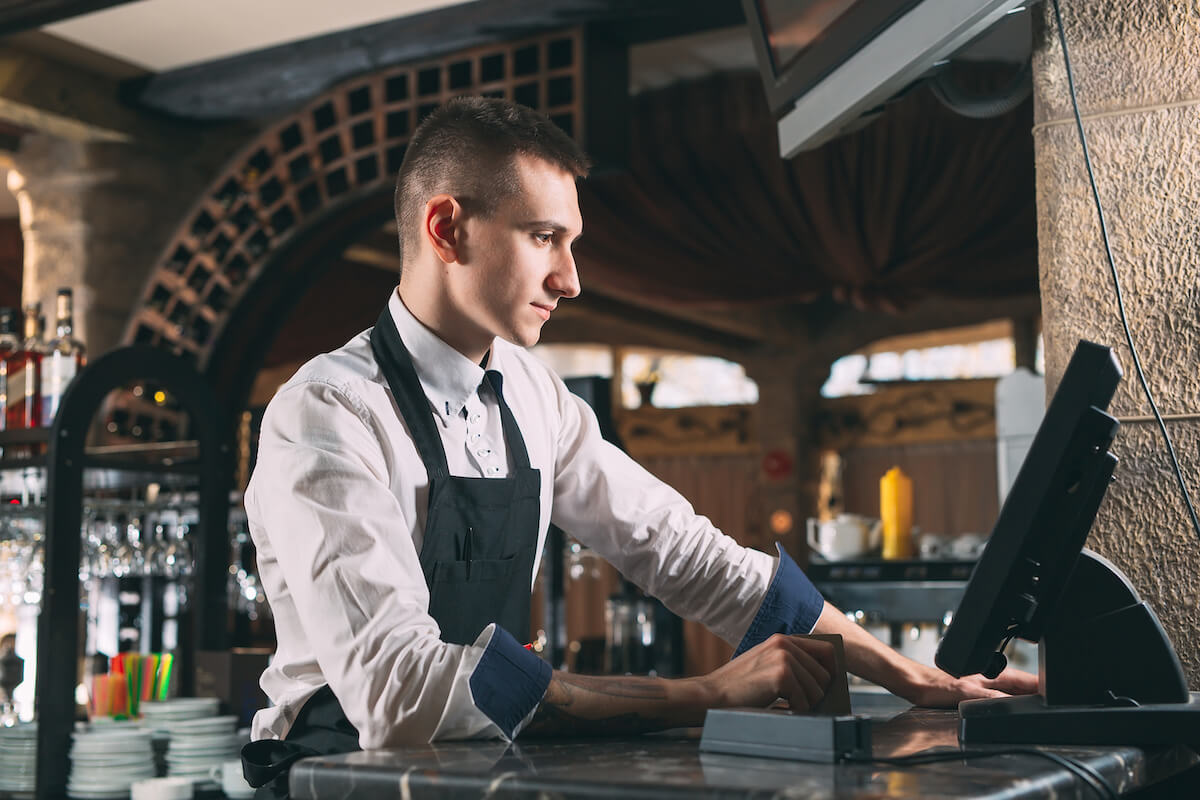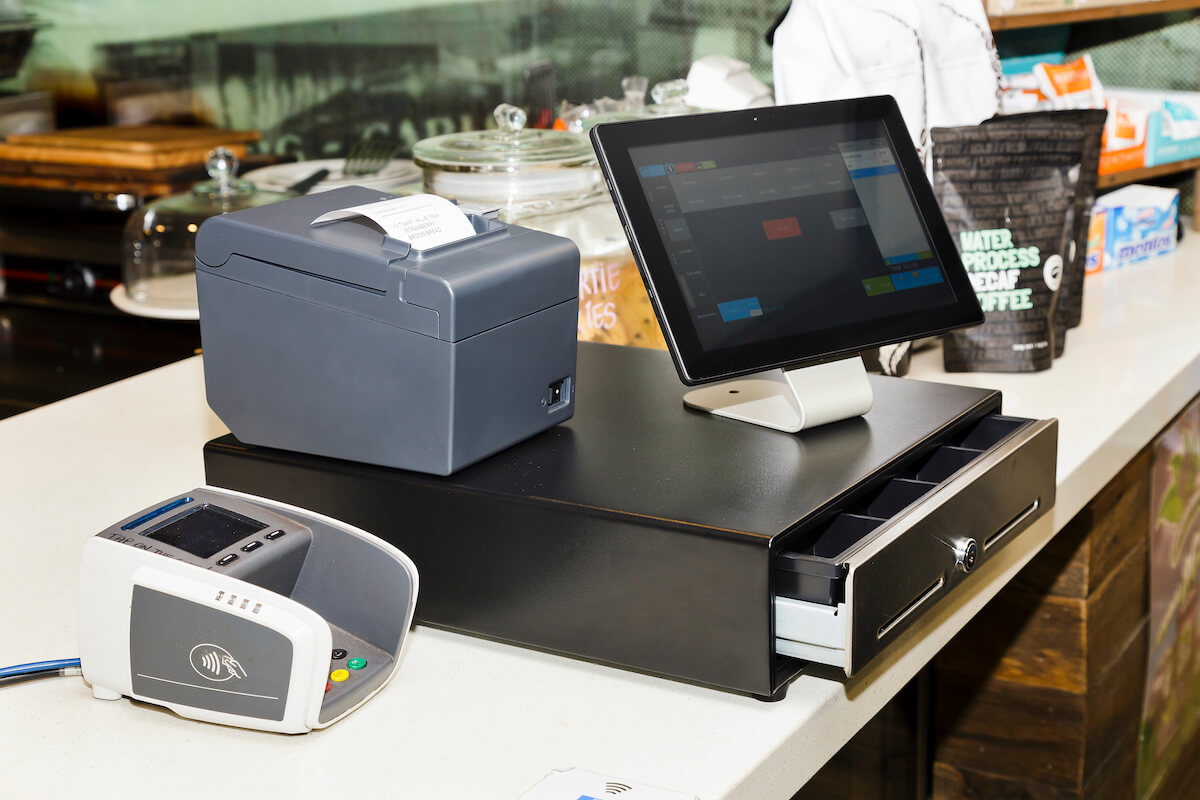- Tying phone and drive-thru orders into your restaurant ordering system allows for a fully automated process that significantly boosts productivity and sales potential
- Voice AI-powered virtual ordering assistants automatically input orders into POS systems, alleviating staff from repetitive tasks
- One Domino’s restaurant franchisee’s experience with voice AI and how it doubled his team’s productivity during peak business hours
A quick-service restaurant’s success or failure ultimately rests on one key benchmark: guest satisfaction. Although guests are always motivated by finding a good meal, that isn’t the only thing they’re looking for when they walk through a restaurant’s doors or enter its drive-thru. Speed, value, restaurant cleanliness, menu pricing, staff friendliness—these are all additional factors that contribute to the likelihood a diner will make a repeat visit.
Restaurant ordering systems also play a role in diner satisfaction. The onset of the pandemic incentivized restaurants to focus on food delivery and takeout, which required the use of digital ordering platforms. Complicated or unclear online ordering systems may confuse or irritate diners, discouraging them from completing their order.
Voice artificial intelligence (AI) continues to transform the food-service industry, including how they interact with restaurant POS systems. The restaurant business remains one of the most challenging enterprises to succeed in, but cutting-edge voice AI-based ordering solutions are one of many emerging technologies helping restaurant owners improve their financial prospects.
Restaurant ordering systems in 2022

In 2022, restaurant ordering systems run the gamut from the traditional front-of-house point-of-sale systems to restaurant website ordering and third-party delivery services such as Grubhub. Profit margins in the restaurant industry tend to be tight even during boom times, so ordering systems need to help restaurants make money, not lose it.
POS systems
Regardless of location, cuisine type or menu pricing, virtually all quick-service restaurants have at least one feature in common: they take guest orders at the front counter. Front-of-house team members working the registers provide friendly and knowledgeable service, including familiarizing new customers with available menu items.
First-party ordering apps
Restaurants benefit from directly operating their own customized online ordering platforms for numerous reasons. For example, proprietary online ordering systems are commission-free, enabling food-service operators to profit off digital delivery and pickup services without losing some of the revenue to a third party. National and regional restaurant chains including McDonald’s, Nando’s and Lou Malnati’s use in-house mobile and desktop ordering apps to fulfill customer orders and to maintain an online menu presence. These apps also provide the perfect medium for customer loyalty programs.
Third-party delivery apps
Although food delivery apps carved a place in the food-service sector years ago, the pandemic and associated lockdowns nearly doubled their popularity. Dominated by a few companies with a strong national presence (e.g., Doordash, Uber Eats and Grubhub) the food delivery business adapted to the pandemic by instituting features like contactless delivery orders and curbside pickup. Online food ordering systems aren’t restricted to desktop platforms. Mobile ordering is an increasingly popular meal ordering tool, so food delivery services optimize their platforms for mobile as well as desktop.
The weaknesses of conventional POS systems

We are in a constant state of tech evolution—apps and methods that worked last year might be passé for guests now. Things can come back in style, like the formerly underutilized QR codes that became the star of contactless restaurant life. Previously used tools of the past are not necessarily ideal now. Although traditional POS systems still have a place in current restaurant operations, exciting developments in restaurant AI technology offer plenty of potential for an improved ordering process and increased productivity.
How traditional ordering systems hold back restaurant productivity
Restaurant guests expect fast and accurate service just as much as a good meal, and restaurants that fail to perform to these expectations will quickly lose business to their competitors. Being tied to manually inputting drive-thru and phone orders can harm productivity by limiting total covers per shift and order fulfillment speed, not to mention the risk of inaccurate order transcription.
Only inputting orders into the POS system by hand requires restaurant staff to work the counters and drive-thru stations at all times. Restaurant management inevitably benefits from the flexibility to deploy team members in different functions at different times as needed, but POS systems with no AI integrations can’t perform without workers. Even a restaurant’s online ordering system typically needs team members to keep a watchful eye for incoming orders and the arrival of delivery drivers. This adds additional stress on the workforce and may lead staff to rush through guest interactions, forgoing the possibility to upsell or maximize the value of a customer order.
The inefficiency of traditional restaurant ordering systems extends to external ordering apps. Although outsourcing delivery services to a third-party cuts labor costs, those may well be neutralized (or even exceeded) by the provider’s monthly fees and credit card processing charges. This is not to mention that restaurant management must also sacrifice a degree of control over the delivery process, potentially putting them in a position where they are held responsible for the failures of another company’s employees.
Restaurants live or die on the basis of their reputation, and third-party apps for delivery may undermine that reputation. For example, if an Uber Eats driver arrives late to their delivery destination or delivers their assigned order to the wrong address, the affected diner may blame the restaurant rather than the delivery driver and leave a scathing review on Yelp. Similarly, many restaurants compensate for the cost of delivery app commissions with menu markups, and potential new customers may see these prices and decide the restaurant is too expensive. Fortunately, newer restaurant voice AI technology gives restaurants a more reliable method to boost ordering efficiency and increase profits.
How integrating voice AI with restaurant ordering systems increases productivity

Conversational AI, or voice AI, offers food-service franchise owners the perfect solution to the outdated and inefficient restaurant ordering process. Voice AI virtual ordering assistants quickly and accurately take guest orders so employees are freed up to fulfill them. Voice AI can interface with all ordering channels, including drive-thru and the restaurant phone network, and relay guest orders to the POS system in real-time. Not only does this free up front-of-house team members to focus on other work tasks, but it also allows for improved order fulfillment numbers so guests have shorter wait times.
The potential of voice AI ordering assistants automating the ordering process can lead to as much as doubled staff productivity during a restaurant’s peak hours. Because team members no longer have to manually input guest orders, they can instead focus on higher-value tasks and in-person interactions.
Restaurants can be a hectic workplace, and team members concerned by lines lengthening, orders stacking up and phones ringing may not take the time to go the extra mile and recommend menu item upgrades or additional purchases. Restaurant ordering systems equipped with conversational AI templates won’t have this issue. They’ll always dedicate that important time to each call. Voice AI assistants even learn over time to offer increasingly relevant, brand-forward order suggestions and upsells. This personalized service and the flexibility to reassign workers to other duties drastically increases productivity.
Happy employees are productive employees. In fact, recent research shows that high team morale boosts work output by 12%, while unhappy employees are 10% less effective on the job. While voice AI directly improves restaurant productivity by increasing total covers and order fulfillment speed, it also has an indirect impact by reducing workplace stress and boosting team member morale. Veteran employees typically form the backbone of any restaurant’s workforce, and happy workers are more likely to stick around long-term. High employee retention contributes to productivity by ensuring that restaurant management always has experienced team members working every shift.
What’s more, voice AI restaurant ordering systems increase profits and productivity to such a degree that restaurant operators may find that commissions owed to third-party delivery services are now negligible. On the other hand, a larger revenue stream might enable management to cut ties with those apps and rely instead on in-house delivery services, as that might no longer be such an inconvenience.
Domino’s Operations Manager Kevin Metzger credits ConverseNow’s voice AI virtual ordering assistants for not only alleviating pandemic-related labor shortages at his store, but actually creating business: “A phone being answered … usually took three minutes. So how many people or phones and lines do you need to get 70 orders in an hour? Whereas now, because of AI, we’re getting those numbers, which used to be 40 or 50 now turned into 70 or 80 orders in an hour in our stores.”
Optimize the restaurant ordering process with voice AI

Business owners who want to remain competitive must take advantage of new tactics and new technology. Adding voice AI virtual ordering assistants to store operations are just one example of how advancements in machine learning and AI are revolutionizing the food-service sector.
ConverseNow’s industry-leading conversational AI ordering assistants currently operate in more than 1,100 restaurants across 40 states, working with regional and national franchises. Our voice AI ordering assistants integrate with your digital space and top POS systems including Pulse, Brink, Toast, Olo, NCR, and many more, and we are ready to upgrade your existing restaurant ordering systems, leading to boosted revenues and a more satisfying guest ordering experience for your restaurant.
Streamline restaurant operations with ConverseNow’s best-in-class voice AI ordering assistants: Schedule a demo today.